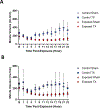Methylene blue and monosodium glutamate improve neurologic signs after fluoroacetate poisoning
- PMID: 32285953
- PMCID: PMC7554062
- DOI: 10.1111/nyas.14347
Methylene blue and monosodium glutamate improve neurologic signs after fluoroacetate poisoning
Abstract
Fluoroacetate (FA) is a tasteless, odorless, water-soluble metabolic poison with severe toxicological effects. Characterized in the mid-1900s, it has been used as a rodenticide but is comparably lethal to all mammals. Many countries have restricted its use, and modern-day accidental human exposures are rare, but recently, concerns have been raised about its application as a chemical weapon with no known antidote. A combined treatment of methylene blue (MB), an antioxidant, and monosodium glutamate (MSG), a precursor of the citric acid cycle substrate alpha-ketoglutarate, has been recommended as an effective countermeasure; however, no peer-reviewed articles documenting the efficacy of this therapy have been published. Using a rodent model, we assessed the effects of MB and MSG on the neurologic, cardiac, and pulmonary systems. Transcriptomic analysis was used to elucidate inflammatory pathway activation and guide bioassays, which revealed the advantages and disadvantages of these candidate countermeasures. Results show that MB and MSG can reduce neurologic signs observed in rats exposed to sodium FA and improve some effects of intoxication. However, while this strategy resolved some signs of intoxication, ultimately it was unable to significantly reduce lethality.
Keywords: 1080; TCA cycle; antioxidant; fluorocitrate; metabolic toxin; rat models.
Published 2020. This article is a U.S. Government work and is in the public domain in the USA.
Figures






References
-
- Marais JSC 1944. Monofluoroacetic acid, the toxic principle of “gifblaar” Dichapetalum cymosum. Onderstepoort J. Vet. Sci. Anim. Ind 20: 67.
-
- Kalmbach ER 1945. “Ten-eighty,” a war-produced rodenticide Science (New York, N.Y.). 102: 232–233. - PubMed
-
- Egekeze JO & Oehme FW. 1979. Inorganic and organic fluoride concentrations in tissues after the oral administration of sodium monofluoroacetate (Compound 1080) to rats. Toxicology. 15: 43–53. - PubMed
-
- 2010. “Factsheet: The livestock protection collar”. In. W. Services, Ed.: 1–3. Washington, DC: Animal and Plant Health Inspection Service.
Publication types
MeSH terms
Substances
Grants and funding
LinkOut - more resources
Full Text Sources
Miscellaneous

